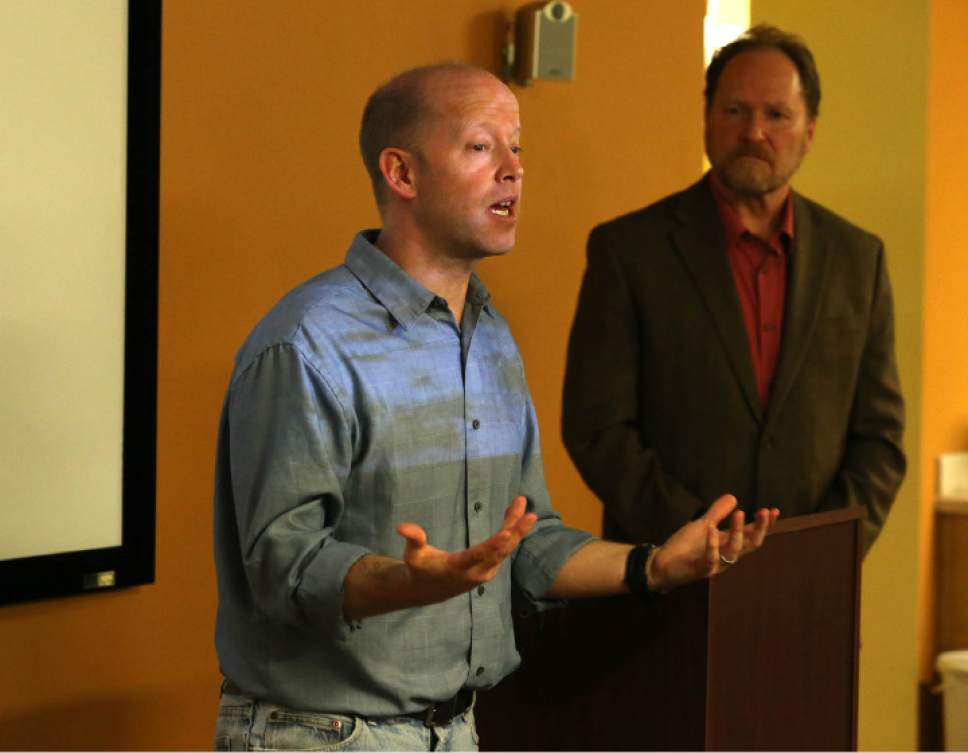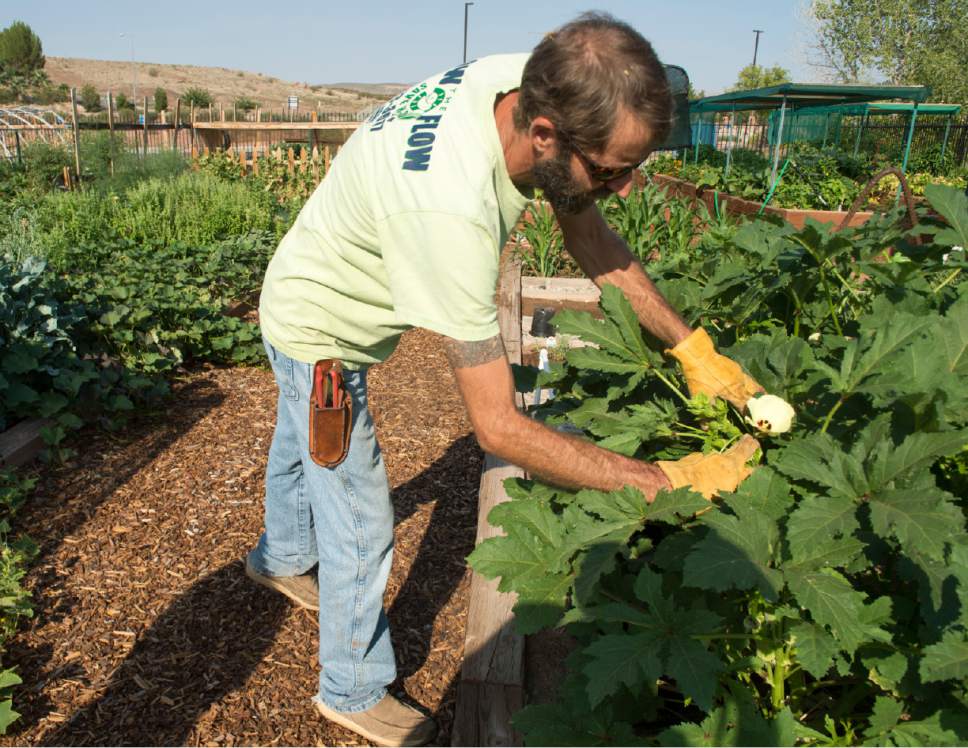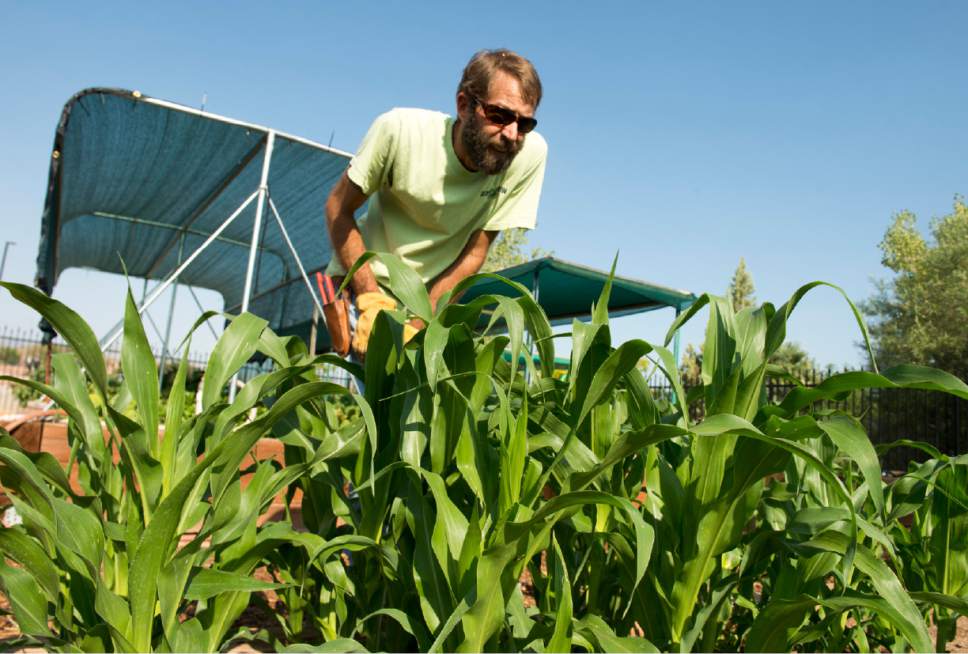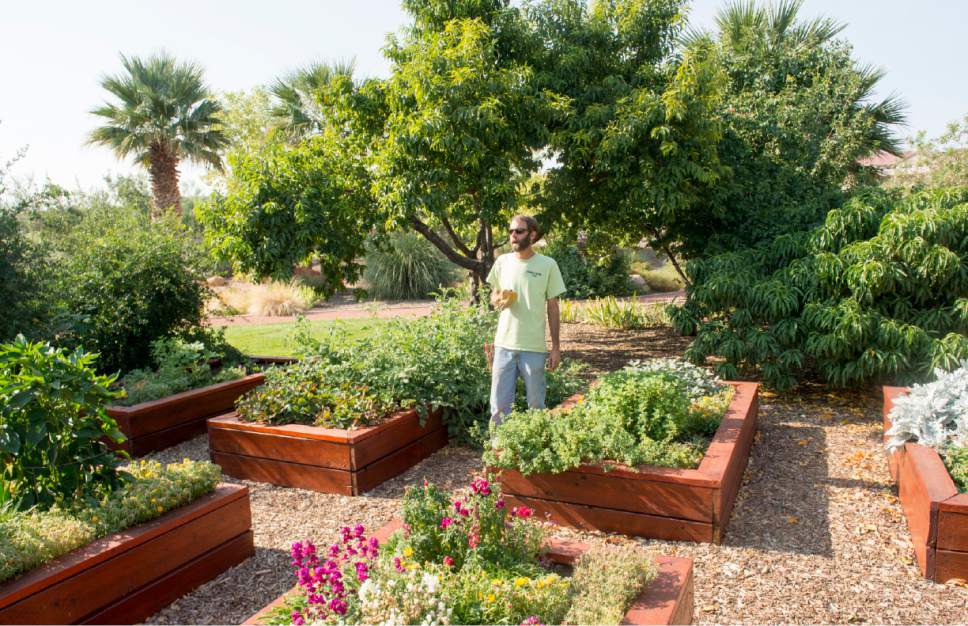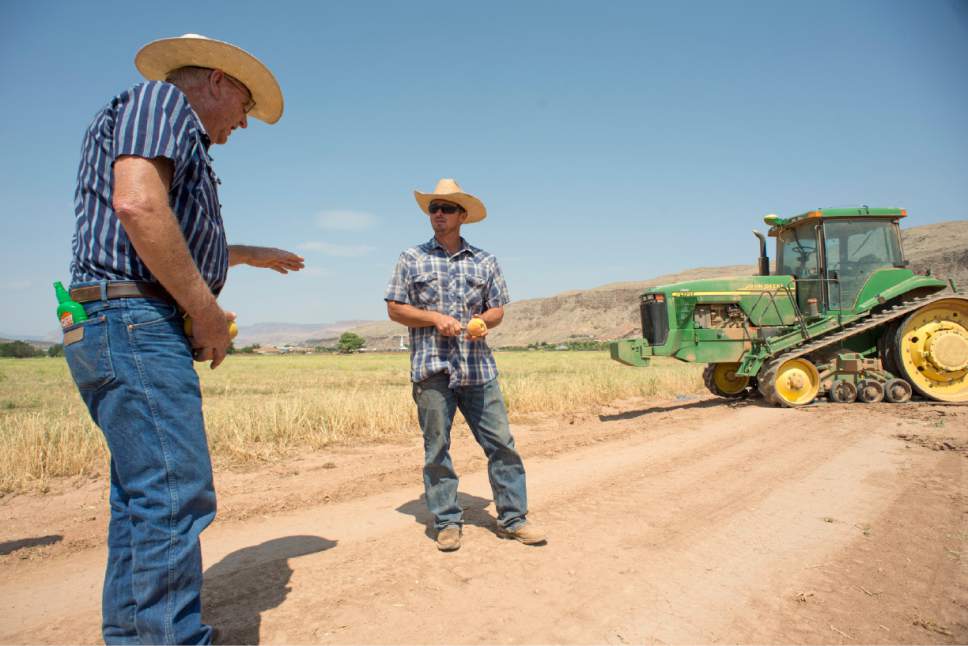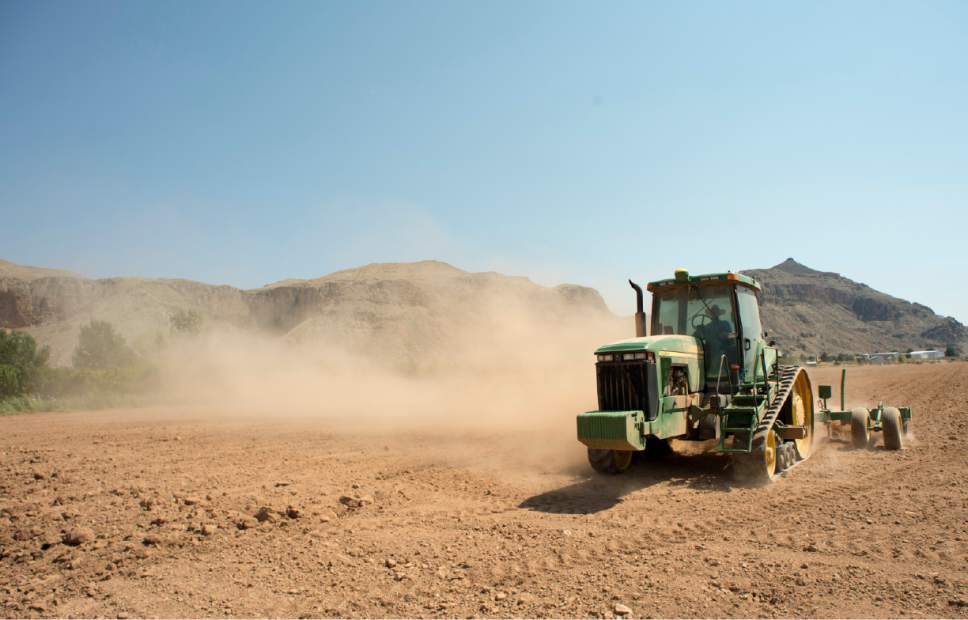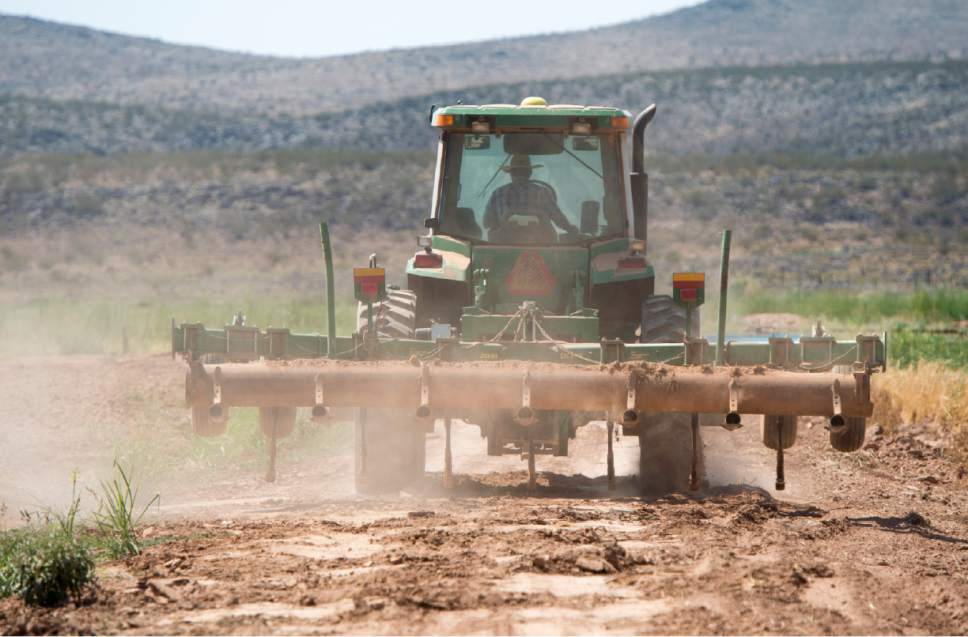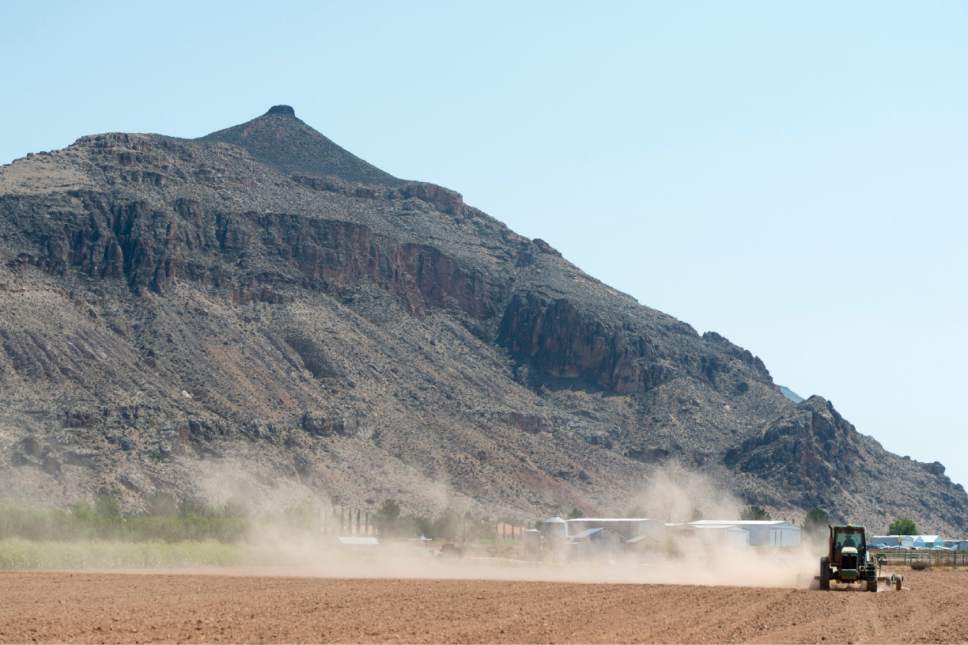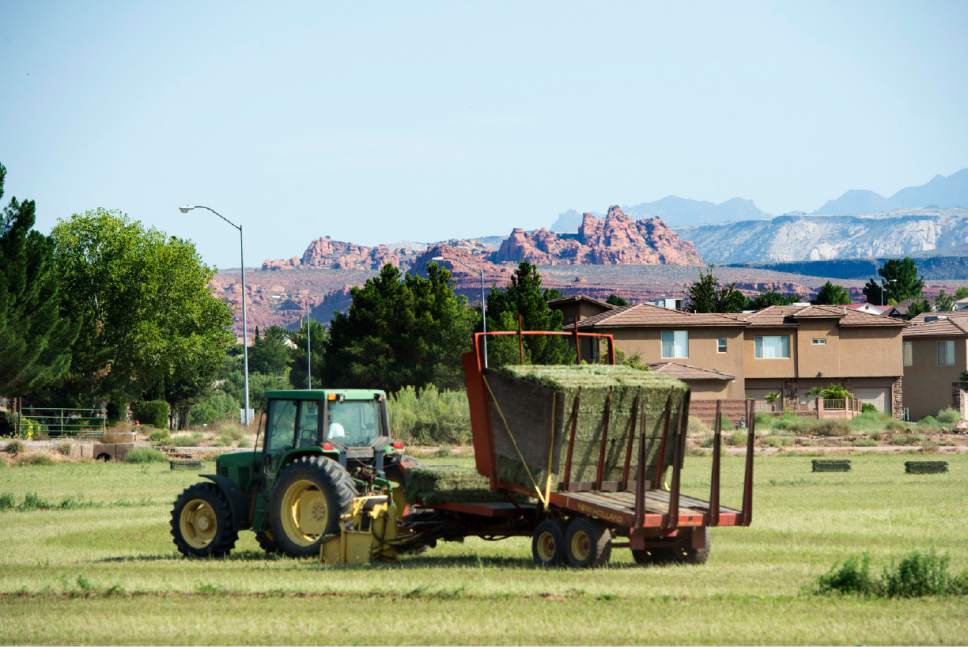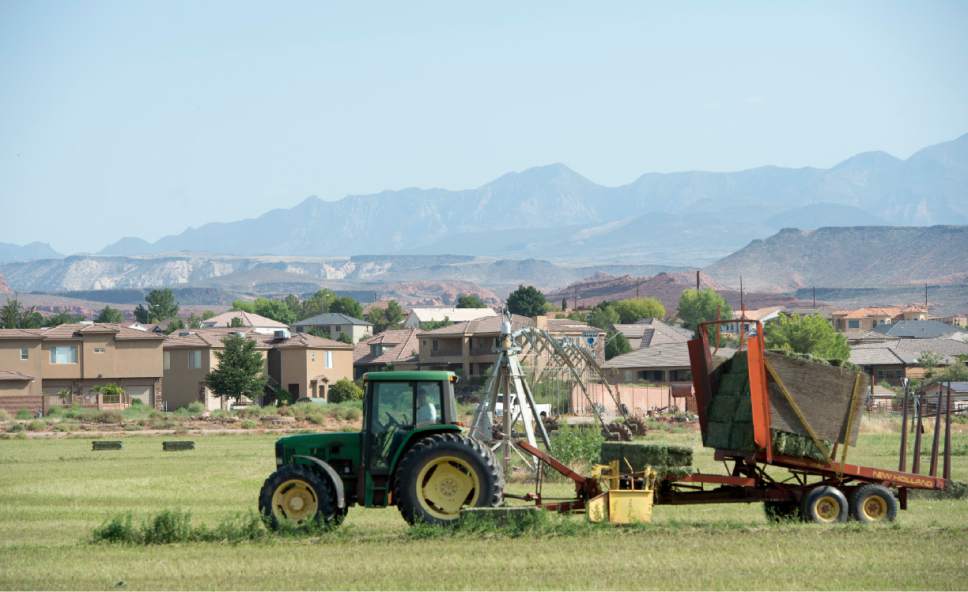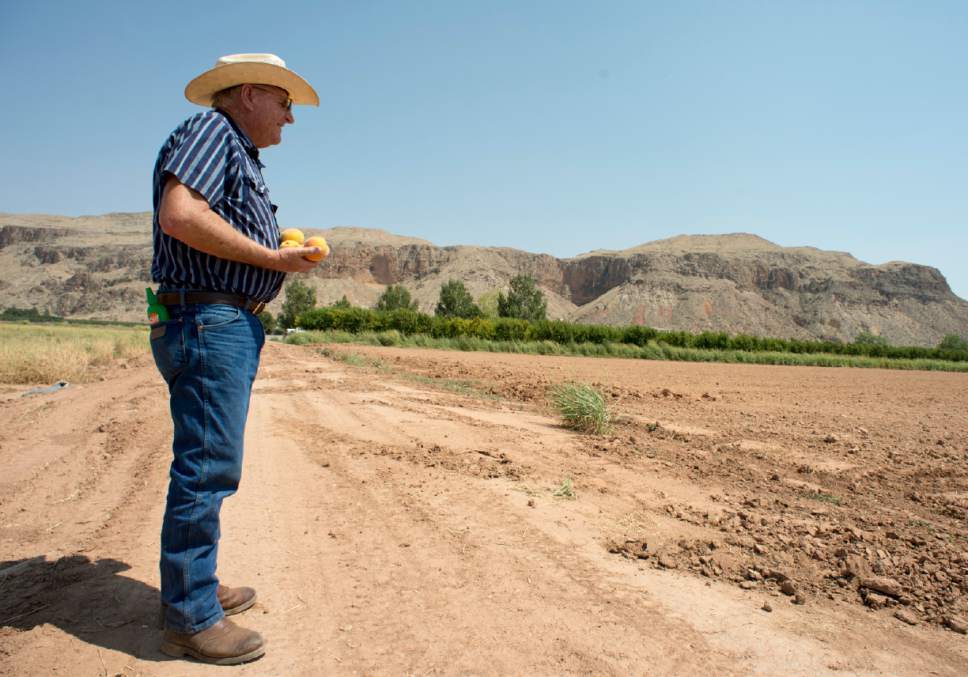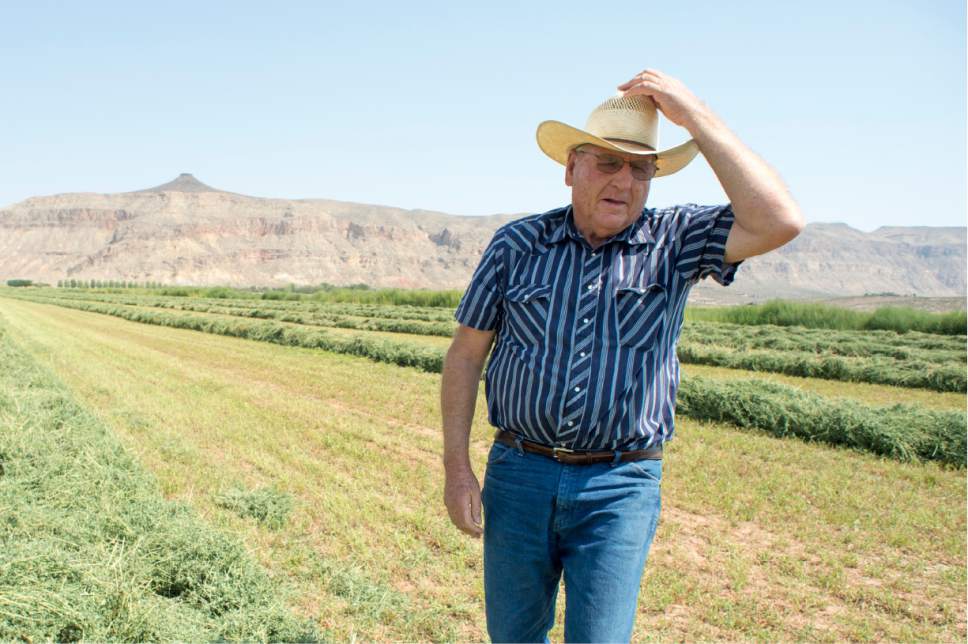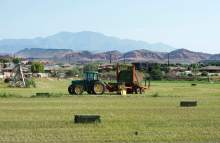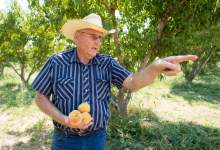This is an archived article that was published on sltrib.com in 2015, and information in the article may be outdated. It is provided only for personal research purposes and may not be reprinted.
Hurricane • Like many of the old-timers in their rural neighborhood, the Wadsworths have an open-door policy with their neighbors.
Need to use a truck? The keys are in the ignition, John Wadsworth says as he climbs in for a quick trip around town. And he occasionally "borrows" a few apples from a tree that grows wild in a friend's pasture down the road.
The trouble with these apples, John explains on the way, is that the birds get to them. But that's just what happens.
"When you have one tree of any kind of fruit off by itself, the birds get most of it," he says. "You have to have a lot of trees get ripe at the same time, so you've got enough to share."
John and his wife, Colette, have been working the land in Hurricane together for almost 40 years.
Now, as the couple consider the future of their family farm, they face a dilemma: They would like to see their children continue to farm the land, but local water policy, high land values and the realities of modern agriculture could make that inheritance more of a burden than a blessing.
They're not alone. Farmland is disappearing under houses throughout the state. And in thirsty Washington County, water managers don't consider the transition something to be mourned.
It's all part of their 20-year plan.
"Frankly, a lot of this [agricultural] ground is going out of production right now," says Ron Thompson, general manager of the Washington County Water Conservancy District.
With high land prices and a dearth of young farmers looking to get into the business, the old guard is retiring, Thompson says. "I'd guess they're going to sell out over the next 10-15 years."
In fact, he's banking on it. He has to. Without building the billion-dollar Lake Powell Pipeline, St. George is projected to run out of water for new growth in the next 10 years — unless, that is, Washington County paves its farms.
Cashless crops • "One of the early pioneers out here said that if he had a choice to build a house in Dixie or a house in hell, he'd build a house in hell," Thompson says. "I always say that the problem now is all those people who built a house in hell are selling and want to move to Dixie."
The county is projected to quadruple its population — 152,000 in 2014 — in the next few decades, and that means homes, condos and subdivisions are replacing farmland.
"As we've grown," he says, "we just have less farm ground."
Washington County's decline in agriculture, though uneven, was especially apparent in the 1980s — corresponding with what Thompson says was a major boom in residential growth.
From 1982 to 1987, Washington County lost almost a third of the 14,100 acres of cropland it had at the beginning of the '80s, according to the National Agricultural Statistics Service (NASS). Since then, the decline has been more measured, falling to about 8,700 acres of cropland. The county also reports more than 100,000 acres of range and pastures where animals are raised.
Washington County has also logged a drop in the diversity of the major crops produced in the county. In 1982, farmers there harvested 3,800 acres of wheat, 2,400 acres of barley, 6,000 acres of hay, and more than 600 acres of orchards. The estimated revenue brought in by those crops was $1.55 million.
By 2012, Washington County had about 8,000 acres of hay, plus 321 acres of orchards, 266 acres of wheat and 59 acres of assorted vegetables.
Those aren't unusual numbers, John Wadsworth says. Even in his small Hurricane neighborhood, he says, he has seen farmers scrap orchards and wheat fields and convert them to fields of hay, primarily alfalfa — regarded by many farmers as a crop with a high potential for profitability, thanks to its low overhead.
Despite the shift to hay, Washington County farmers took a hit in their pocketbooks. While the market value of the county's farm products was up to $12.6 million, the expenses farmers reported were necessary to produce those commodities rose to $16.9 million.
"It's always interesting to look at expenses and market value, just to see if they're making any money or not," says John Hilton, Utah's state statistician for NASS. "And in a lot of cases here in Washington County, they're not."
It doesn't pay to farm.
Liquid assets • Municipal growth and development, on the other hand, are bringing new forms of revenue to the area. Thompson says this kind of growth is the community's savior — and most seem to agree.
"We've had several people try to run [for politics] on an anti-growth initiative, and they've never fared very well," Thompson says. "It doesn't seem to be where the population is going. I don't see a big sense of putting significant limitations on growth."
This is true statewide, says Zach Frankel, executive director of the Utah Rivers Council conservation group. In any Utah community that has seen extensive growth, he says, the odds are stacked against farmers.
"The chances that Washington County can protect its farmland are slim," based on what has happened in other communities, Frankel says. "But the bottom line is it's not water that is limiting our growth."
Even if Utahns cut back on watering their laws and start turning off the faucet while they brush their teeth, it won't be enough to save farming, Frankel says. That's because a subdivision — even one with large, overwatered lawns — still uses significantly less water than if the same amount of acreage were dedicated to crop production.
Frankel believes money, not water, is at the bottom of the shift from farmland. Policymakers stand to profit from the construction of new water projects, whether or not their communities actually need more water, he says. And developing farmland also represents more money in their pockets.
"This is about empire building," Frankel says. "This is about money."
The Washington County Water Conservancy District has two major sources of revenue: the service fee it collects from its water customers and a property tax paid by Washington County homeowners. In 2010, according to a 2011 conservancy district budget, the district brought in a little less than $7 million in service fees and more than $10 million from property taxes.
The situation has many farmers worried that the conservancy district will find a way to shut off their water in an effort to force them off their land to make way for more residential properties and, therefore, more tax revenue.
Gary Turner, a sod farmer from Washington City and vice president of the Washington County Farm Bureau, says he knows some farmers have opted to put their land up for sale now, rather than wait for their water to be turned off later.
"We don't have any more water," he says "There's none to get, and as development occurs, they'll take agriculture water and turn it into drinking water. We can all see that coming. Farmers know we're easy targets."
Thompson says those fears are unfounded. The district hasn't had much interest in acquiring farmers' water, which would be too difficult to convert into drinking water anyway, he says.
But Washington County farmers say they're outmatched, whether they're fighting for water or land.
Money doesn't grow on trees • The reality, John Wadsworth says, is that small farms struggle to compete with larger enterprises.
For example, Wadsworth says, pork used to be raised as a farmer's backyard project in the 1950s. These days, he says, agriculture is so efficient that there are 20 semi-loads of pigs traveling down the interstate from Milford to Los Angeles every day, five days a week, year round.
"People want to know where their food comes from," Wadsworth says. "They want to get back to basics, but none of them understand that there's too many of us. You can't farm like you did in the 1950s and feed the population that we have now.
"When I first started farming in 1970, there were a lot of farmers using small amounts of property," Wadsworth says. "Now, most of that property is farmed by three or four individuals — what hasn't been subdivided."
Just up the interstate, in Iron County, Wadsworth says, he knows another farmer who is currently working 6,000 acres.
"We can't even compare to what they do," he says. "The most farming I've ever done was about 250 acres."
Dennis Frei, president of the Santa Clara Irrigation Co. — a secondary water system separate from the conservancy district — says it has become essentially impossible to buy and maintain a farm in Washington County that is large enough to make money in a modern economy.
Say you wanted to buy 20 acres in Washington County. If you got a good deal, he says, you would pay $20,000 to $30,000 an acre — or roughly $600,000 for the whole package. And that's an unusually good price for land in Washington County. At the height of the building boom in the 1980s and '90s, he recalls, he was getting offers on his own farm that started at $100,000 an acre.
"For 20 acres," he says, "it's pretty tough to turn down $2 million."
Frei's relatively small farm grows a variety of fruits and vegetables — tomatoes, peppers, melons — which he sells at his bustling family business, Frei's Fruit Market.
His father started the business as a little card table he set up on the main drive through town to peddle fresh produce. Today, the roadside stand often sells more produce than Frei can grow by himself, in addition to homemade jam, salsa and other wares.
In Santa Clara, it's the exception, not the norm. Santa Clara Drive used to be lined with fruit stands, Frei says, but these days, Frei's Fruit Market is a neighborhood novelty.
And even though the stand is busy with customers all season long, Frei's farm isn't profitable. He farms on the side while working sales for Sysco foods to make a living.
The Washington County farmers still in business aren't in it for the money, Frei says. They turn down lucrative land deals because they love the lifestyle and hope to pass the family farm to their children one day.
"If the farm's in the family, they will continue to farm if they have a kid who really wants to. They wouldn't sell right now just because they're liking what they're doing, just like us," he says. "But if they had to have the money, it would be gone."
And while Frei happens to have a son who hopes to inherit the family farm when he returns from his LDS mission, many other farmers' children aren't interested in such an inheritance, he says.
As the number of farms dwindles as farmers retire without passing their farm onto the next generation, the expense of purchasing or starting a new farm prevents newcomers from replacing the lost farms.
"I don't think you would ever pay off the debt" if you tried to buy a farm or expand in Washington County, Frei says. "I don't know what crop you could put on there that would do that for you. I just don't know what the crop would be."
So Thompson's prediction that Washington County farmers will sell out during the next decade or so, Frei says, "might be the truth."
No breadbasket • Farther south, in St. George proper, another farmer, Casey Jones, is just arriving at his day job as a horticulturist at the Tonaquint Nature Center.
Jones has a more positive outlook on the future of agriculture in Washington County. He has been experimenting with nontraditional crops he believes could be grown in southern Utah without irrigation — artichokes, for example.
Because of its water situation, and because of the area's poor soils, Washington County would probably never be able to grow all the food it needed locally, Jones says, even though it's possible to grow nearly year-round in some parts of the county.
He believes many crops would do well in the county on a commercial scale: artichokes, grapes, cotton, pumpkins, zucchini and all variety of squash, melons, peaches, pecans and almonds.
"People are farming these already," he says. "Or they should be."
But Jones, too, has watched farmland come into conflict with the county's rapid development.
"I came here in the early '90s, and this town just went nuts," he says. "I'd like to have a happy medium somewhere."
Yet if the end of Washington County agriculture is truly near, Jones says he doesn't think the loss would impact the average resident.
"I'd hate to see people lose their livelihoods," Jones says, "but I just don't think the average person would notice the loss of local agriculture."
Colette Wadsworth, president of the Washington County Farm Bureau, says the issue at hand isn't economics. The real loss, she says, is the outdoorsy, nature-centered lifestyle that brought so many residents to Washington County in the first place.
"It's not so much the income," she says. "It's the lifestyle that people regret losing with agriculture. And it's tough keeping that lifestyle."
Twitter: @EmaPen


